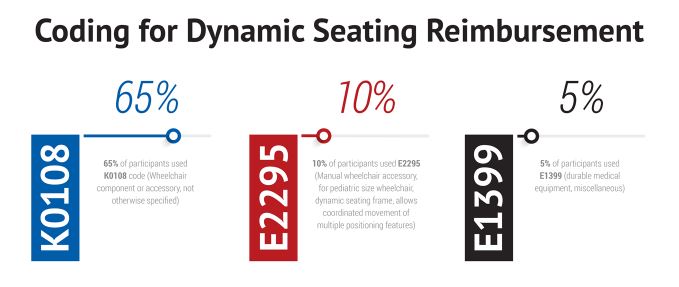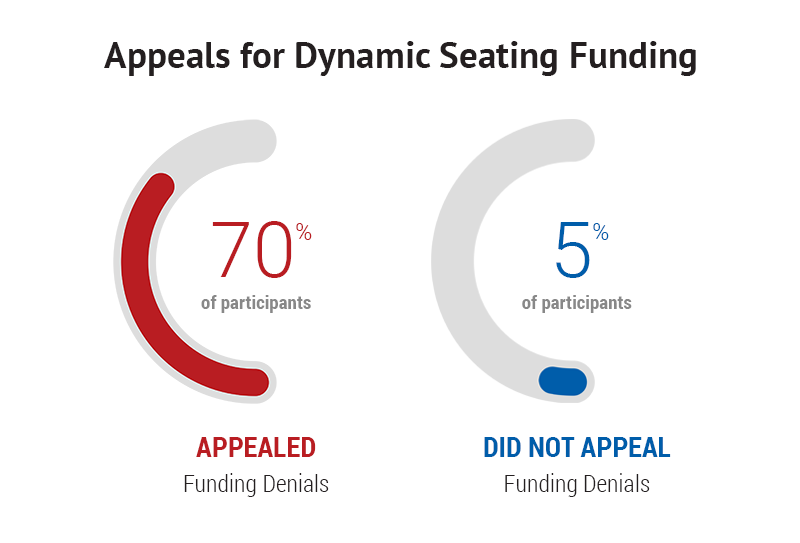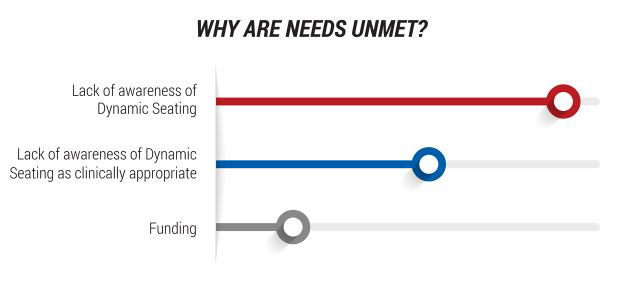Michelle L. Lange, OTR/L, ABDA, ATP/SMS
In the Fall of 2018, a survey was widely distributed through several listserves and numerous emails. The survey was created and distributed by Seating Dynamics with the goal of obtaining information regarding funding of Dynamic Seating components, without bias to any one manufacturer’s products. In this blog, we will summarize key results and the implications for Dynamic Seating provision.
Funding Sources
The survey was completed by a variety of Dynamic Seating industry professionals with the largest proportions of participants identifying as Suppliers (45%) and Therapists (43%). 98% of the participants were currently recommending Dynamic Seating for the clients they serve.
The participants indicated that, of the Dynamic components recommended, successful reimbursement was obtained from Private Pay (75%), Private Insurance (80%), State Medicaid Programs (80%), Medicare (20%), the Veteran’s Administration (18%), Worker’s Compensation (43%), and Government Insurance (outside the USA, 13%).
Coding
65% of the participants reported using the K0108 code (Wheelchair component or accessory, not otherwise specified), 10% reported using E2295 (Manual wheelchair accessory, for pediatric size wheelchair, dynamic seating frame, allows coordinated movement of multiple positioning features), and 5% reported E1399 (durable medical equipment, miscellaneous).

Currently, all Dynamic Seating components in the United States are coded as K0108 by the manufacturer. 70% of the participants indicated that if denied funding for components, they typically appealed the denial. Only 5% of participants reported not trying for an appeal when denied.

Need
68% of the participants believed that not everyone who could benefit from Dynamic Seating is receiving it, whereas only 10% indicated that people’s needs are being adequately met.




When asked why, the participants indicated the following in order of frequency:
- lack of awareness of Dynamic Seating in general
- lack of awareness that Dynamic Seating is clinically appropriate for a specific client
- Belief that funding is unavailable
- Belief that funding is complex
Implications
The survey participants indicated that successful reimbursement is occurring from a variety of sources, though Medicare and the Veteran’s Administration were much lower than other payers. This could indicate that funding is more challenging from these sources or that Dynamic Seating is not frequently requested for clients with these funding sources. Specifically, the VA services a population that is often not perceived as appropriate for Dynamic Seating, though many people with a brain injury may benefit from this technology. Medicare is not always the primary payer, and so may not ultimately fund this equipment. Most participants are using the K0108 code and are appealing denials. The consensus of the group was that barriers other than funding were more significantly impacting Dynamic Seating provision.
If you are running into barriers preventing provision of Dynamic Seating, please contact us. We may be able to help
** This post was originally published on https://www.seatingdynamics.com/2019/09/03/2018-dynamic-seating-funding-survey/

